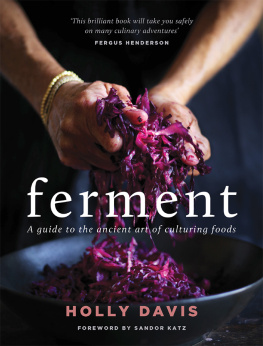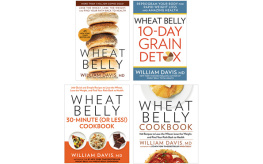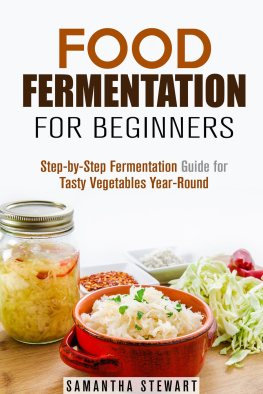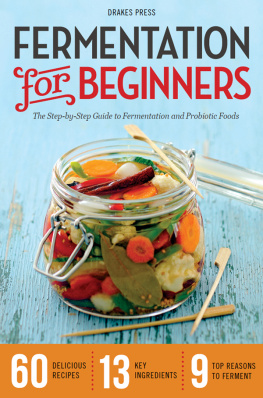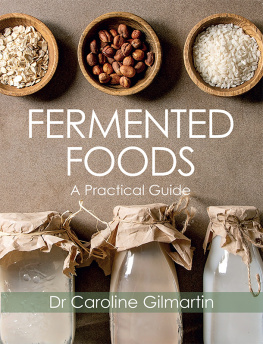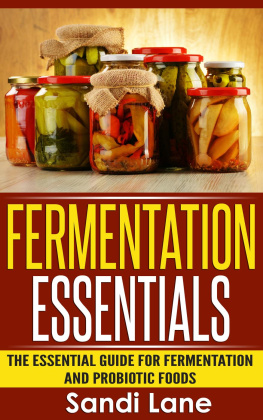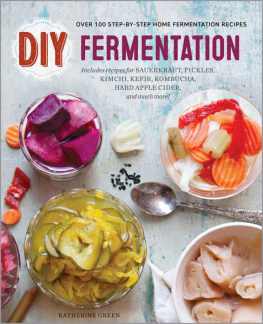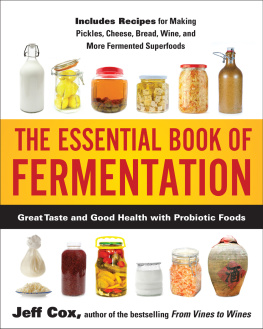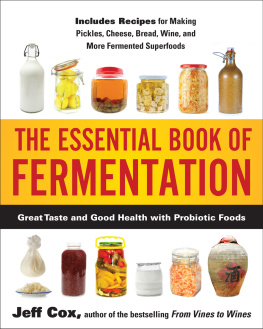
With Hollys guidance and inspiration, you can become part of the fermentation revival.
SANDOR ELLIX KATZ
The most useful and practical guide to the magical art of fermenting.
JAIMEE EDWARDS, CORNERSMITH
What does your favourite farmhouse cheese have in common with crusty sourdough bread, a glass of sparkling home brewed ginger beer or a bowl of marinated olives? The answer is each is a product of fermentation, a process that harnesses good bacteria in order to preserve ingredients and transform them into uniquely delicious foods and drinks with remarkable health benefits.
Thanks to an increasing awareness of the crucial role probiotic-rich foods play in our wellbeing, the ancient art of fermentation is experiencing a renaissance. Add to this the joy, ease and economy of making fermented foods at home, and its no wonder we are scrunching, pickling and bottling our way to better gut health and a deeper connection with our food.
With this extensive collection, wholefood pioneer Holly Davis shares familiar and lesser-known recipes, and the wisdom and experience accumulated over 40 years of teaching fermentation techniques around the world. Her gentle and thorough guidance guarantees you will find a place in your home for one or more ferments that make your heart and stomach sing.

FOREWORD
SANDOR ELLIX KATZ
Fermented foods and beverages are older than recorded history and integral to culinary traditions in almost every part of the world. Fermentation preserves food effectively and safely, and also makes food more digestible and nutrients more bio-available, removes many toxins from foods, and contributes nutrients, some of which have been found to have powerful therapeutic benefits. The live bacteria in fermented foods and beverages not cooked after fermentation are probiotic, helping to restore and diversify our gut microbiota.
Not everybody loves every flavour of fermentation, but once you learn to love them nothing else can compare. Flavours of fermentation are prominent not only in Western cuisines but around the world. I have been unable to find any example of a culinary tradition that does not incorporate fermentation, and in many diverse locales ferments are essential everyday foods. According to one estimate, one-third of the food that human beings consume has been transformed by fermentation before we eat it.
Ferments are savoured as delicacies, celebrated as sacraments, embraced as daily staples, and prescribed as remedies. Yet despite the importance of these foods and beverages, hardly anyone makes them anymore, thanks to food mass-production and the push for ever-greater convenience. Sadly, the strands of continuity passing on from each generation to the next the essential cultural information of how to make and use fermented foods have largely been severed. At the same time, we have been taught to view bacteria as dangerous, to the point where fermented foods and beverages are perceived by many as dangerous, especially the idea of making them in our home kitchens. Many people project their fear of bacteria onto the process: How can I be sure I have good bacteria growing rather than bad bacteria?
Even in the face of this widespread (and misplaced) fear, people everywhere are taking a renewed interest in the process of fermentation. The products of fermentation themselves have never wavered in popularity, but as people take a greater interest in where their food comes from and how it is produced, there is a hunger for practical information on how to ferment various foods at home. This interest is intensified by new scientific findings highlighting the importance of bacteria to our health.
Holly Davis has been exploring and practising fermentation for decades. Shes also been teaching people about food for that long. Holly knows how to present ideas and recipes simply and clearly. As soon as we met, we bonded over our shared approach to food, especially the idea that there is no one best diet for everyone, and being wary of superfoods, fad diets, and other reductionist approaches. Like me, Holly takes great pleasure in food, and that comes through clearly in this book. Most important, she is encouraging, and with Hollys guidance and inspiration, you can become part of the fermentation revival!
CONTENTS
MY WHOLEFOOD HOME
One mouthful is all it takes to get hooked on the satisfying textures and dynamic flavours of fermented food and drink be it a slice of fabulous sourdough bread, raw milk cheese, pickled vegetables, preserved fruit or a bubbling brew whose useful life was extended by these processes. Fermentation is an ever-present force of nature and with just a little understanding, beneficial microbes can be employed to predigest and transform all manner of ingredients into vital additions to our diet. While you care for, crunch and sip ferments with relish, they also offer invisible probiotic support shown to enhance our digestion, immunity, brain function, nutrient levels and more. Who knew something so enjoyable could be so useful?
Sharing delectable food is the surest way I know to positively influence a persons relationship to eating and enthuse them to make their own. On a stinking hot day, a proffered glass of sparkling water kefir often elicits curiosity: This is so refreshing, how did you make it? Then: May I have some of the culture? Definitely! is always my answer because this gifting of starter cultures is the way many of these miraculous ferments have travelled the globe to us. Deliciousness is their currency and we their generous means of transport.
One look around my house confirms that an omnivorous wholefood enthusiast lives there. I use time and some of natures ubiquitous gifts to facilitate fermentation: her cool earth to maintain a steady temperature while a crock of kimchi ferments, her warm breezes and sunshine to dehydrate umeboshi plums and root vegetables all of which happens as her ever-present supply of invisible, preservationist microbes do their work.
Things at my house go pop, crackle and fizz in their crocks, pots and jars, or quietly double in size through the night. Some residents announce their presence, first by their promising scent, others with what some would term a potent pong. (It will be obvious to anyone who has ever smelled kimchi that there is good reason for the tradition of making it outside.)
Having employed, experimented and learnt about the art of fermentation for over 44 years, I have had the privilege to be a wholefoods pioneer restaurateur, private chef and educator. In all I do, I look to revive our societys respect and value for what nourishes us well. Specifically, I feed people wholesome meals, with a little ferment or two.

